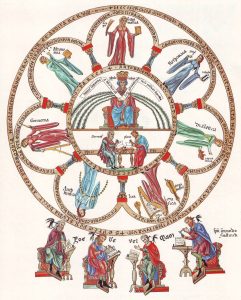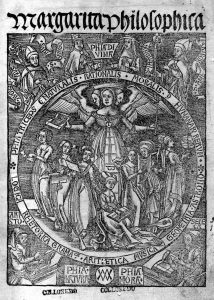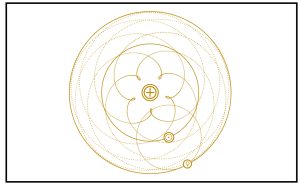Until only recently the Septrivium was well known, at least to the English speaking world. Britain, for example, used it as the foundation for what are now called Grammar schools.
The Septrivium was aimed at giving those who studied it the ability to think freely and clearly on any subject. This was seen as in contrast to more vocational training as was more common at the time. Unlike modern education systems which focus, via various means, of harmonising the thoughts of the general public around various social dogmas (see here for an excellent video covering this), the Septrivium offered first mental and artistic freedom and, ultimately, spiritual liberation through philosophy and theology. It is this freedom that is referred to in the ‘liberal arts’ education. The arts to free oneself from ignorance.
ROOTED IN ANTIQUITY
The Septrivium is presumed to have roots at least as far back as Ancient Greece, via Plato’s discussion of music in The Republic and Pythagoras’ fascination with Geometry. During both the Roman and Greek periods there was great focus on oratory (the trivium) as a means for gaining power and prestige. The Sophists, for example, would train anyone who paid them to become a great orator. Or this is what they promised at least.
A MEDIEVAL REVIVAL
 With this said, the Septivium itself seems to have emerged from Medieval Europe. The associated image dates from 1185 and is from the Hortus Deliciarum, the ‘Garden of Delights’, an absolutely wonderful manuscript sadly lost to us. It is interesting to note that at the center of the image we find a Queen with three faces on her crown. This seems to represent Sophia, or wisdom in the deepest sense, with a triple aspect. This is common in Goddesses of antiquity but it is strange to find it illustrated so clearly in an encyclopaedia written in the middle ages. The text itself is full of references to the Zodiac and various other things of interest. We will come back to this in a later article.
With this said, the Septivium itself seems to have emerged from Medieval Europe. The associated image dates from 1185 and is from the Hortus Deliciarum, the ‘Garden of Delights’, an absolutely wonderful manuscript sadly lost to us. It is interesting to note that at the center of the image we find a Queen with three faces on her crown. This seems to represent Sophia, or wisdom in the deepest sense, with a triple aspect. This is common in Goddesses of antiquity but it is strange to find it illustrated so clearly in an encyclopaedia written in the middle ages. The text itself is full of references to the Zodiac and various other things of interest. We will come back to this in a later article.
Of particular interest is the date at which this was published. We see very similar motifs being developed in the gothic architecture which was to follow. This, as we will see in later articles, is related to the ongoing crusades which were occurring at that time.
 In the year 1503 we find another echo of the same ideas. This time in the Margarita Philosophica, the ‘Philosopher’s Pearl’, again showing a triple faced Goddess at the centre of philosophy, itself a word of course meaning ‘Lovers of Sophia’.
In the year 1503 we find another echo of the same ideas. This time in the Margarita Philosophica, the ‘Philosopher’s Pearl’, again showing a triple faced Goddess at the centre of philosophy, itself a word of course meaning ‘Lovers of Sophia’.
From these images and documents we can see that these ideas had embedded themselves at the heart of European culture and expressed ideas which, on the face of it, might be considered far from Christian. As we will see later, for example, there is a repeated use of the symbols of the Zodiac in related artwork, both in architecture and also in printed form. We will come back to all this in far more detail in later articles.
THE SEPTRIVIUM ITSELF
The Septrivium was separated into two parts, the Trivium, which concerned itself with words, and the Quadrivium which concerned itself with number and proportion. They were as follows.
THE TRIVIUM
1. Grammar
Grammar was focused on the concept of correct communication. Say what you mean, mean what you say.
2. Dialectic
Dialectic is learning to distinguish truth from falsehood. Also referred to (incorrectly) as logic in modern systems.
3. Rhetoric
Rhetoric was the art of making your communication beautiful and emotionally evocative. An engineering textbook may deal in absolute truth but may be less than emotionally engaging.
QUADRIVIUM
1. Arithmetic
Arithmetic concerns itself with number and quantity. I have touched on the beginnings of this here. You will see within this model there are already the foundations for an harmonic understanding of number.
2. Geometry
Geometry is the core of proportion and form through space. In two dimensional fashion in drawings, and three dimension in sculpture and architecture.
3. Music
Music is the dynamic geometry of sound moving through time. It introduces the concepts of resonance, dissonance and harmonics.
4. Astronomy
Astronomy was the culmination of the above, to see the universe as a symphony of harmonic perfection. It was the music of time and space, something I touched upon here.
At their highest level, these are profound arts. The talk of the harmonic unity of the cosmos and the perfection of a divine creation. It was always thought that one should be mindful whom one taught should such skills falling into the hands of the unworthy, the corrupt. They would use Rhetoric, for example, to beguile the masses should they learn the secrets. This led to the creation of occult orders, brotherhoods and covens of people who guarded this and the secrets which they derived from it.
Dual meanings, termed the esoteric and the exoteric, were developed to shroud the deeper mysteries from the eyes of outsiders. The esoteric dealt with the hidden truths, the exoteric dealt with what one were to tell the masses. One needed to dress it up in whatever was the fashion of the day should the powered that be, or the ignorant horde, work out the powers they contained. This reasonable strategy, however, contained within it the seeds of it’s own destruction. Over time a naturally elitist attitude developed amongst the initiates, a view that they were beyond the rules of other men. For example, if they knew the secrets of Geometry, they would be better craftsmen or artists. If they understood the key to music (the circle of 12) they would be better composers. This, in turn, corrupted them, leading such orders to become the very thing they had been set up to protect against.
Ultimately this path lead to Truth. Whilst Truth is a noble goal in good times, in times of corruption, such as now, it becomes a threat to social stability. The lie must be carried on at all costs. We see this today. “Truth” is now dictated by decree.
For some historical context, an interesting case of a man who spoke the truth to power, we need look no further than Giordano Bruno. His crime, amongst others, was to suggest that our solar system was one amongst many and that life was common amongst the stars. For this heresy he was hung upside down, with his tongue bound to stifle his ‘wicked words’ and burnt at the stake.
It times like these, such traditions had, again, to be veiled in secrecy. The symbol below, the triangle, square and circle, was commonly used to denote the “philosopher’s stone”. Like all such symbols it had many level of meaning, but a relatively simple one is the Septrivium. The art by which the lower self (the inner circle) becomes one with the higher self, the monad of antiquity.





